For today's project, we're going to be looking at how a tire and rim
seal air inside. If you've ever had a tire with a mysterious air leak
and had the shop tell you that the leak is caused by the rim bead seal,
this is what they were talking about.
Here's a tire and rim from a wrecked 2000 mercury grand marquis
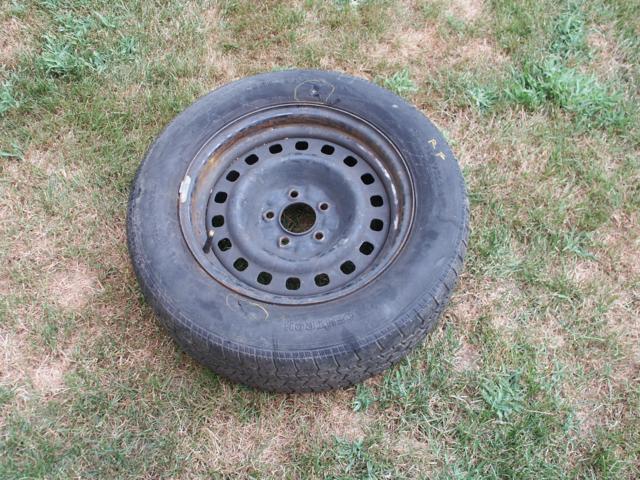
This tire is junk because of a couple unrepairable gouges in the
sidewall. So some destructive cutting tools were used to pull the tire
off the rim
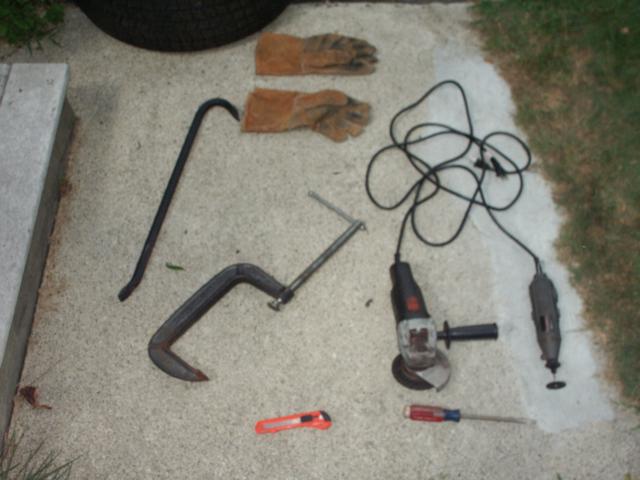
Here's the tire after it was cut in half.
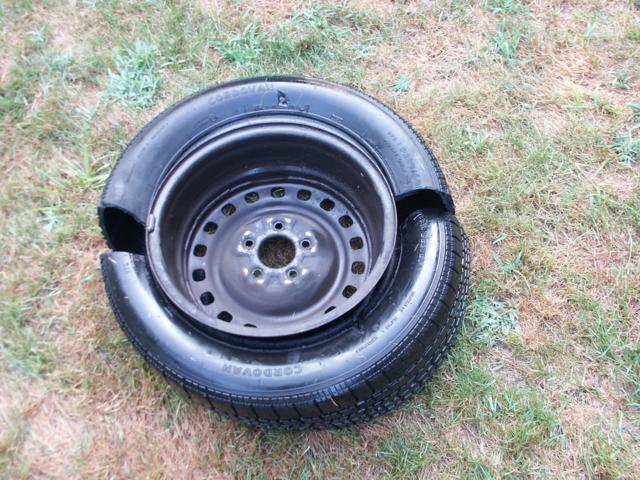
On the surface, this may look like a nice 1999 crownvic wheel
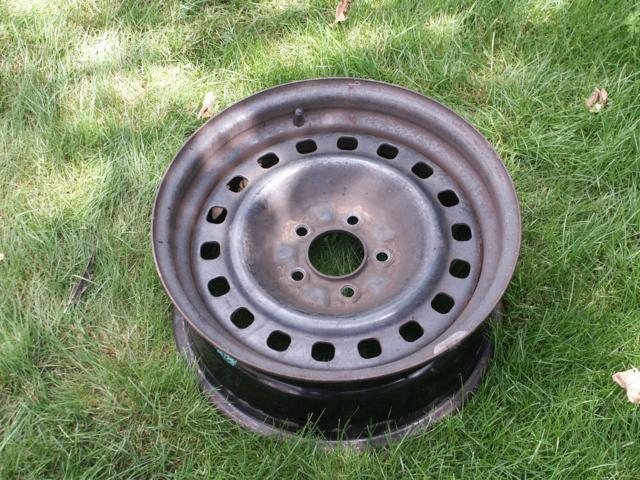
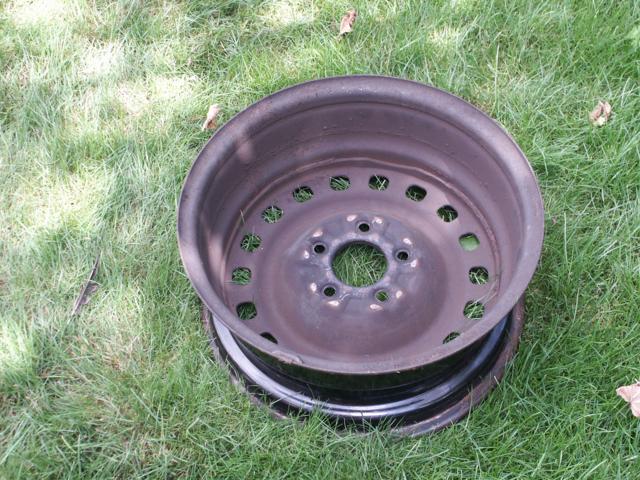
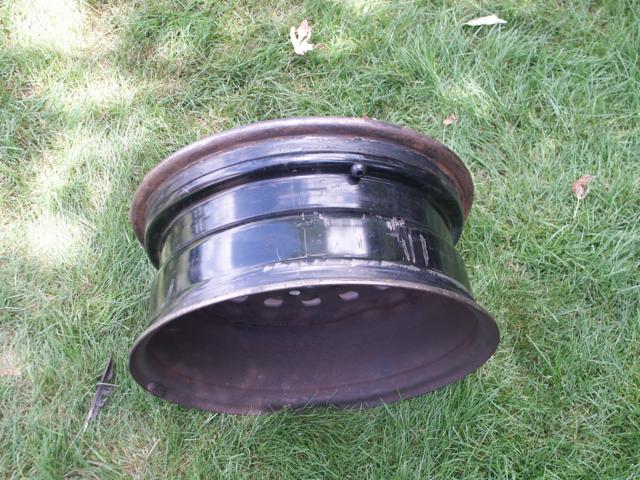
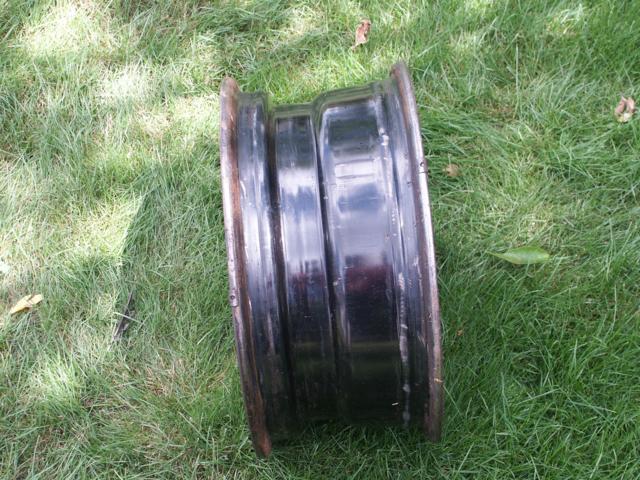
But under different lighting, rust is visible around the rim
flange where the tire bead normally sits.
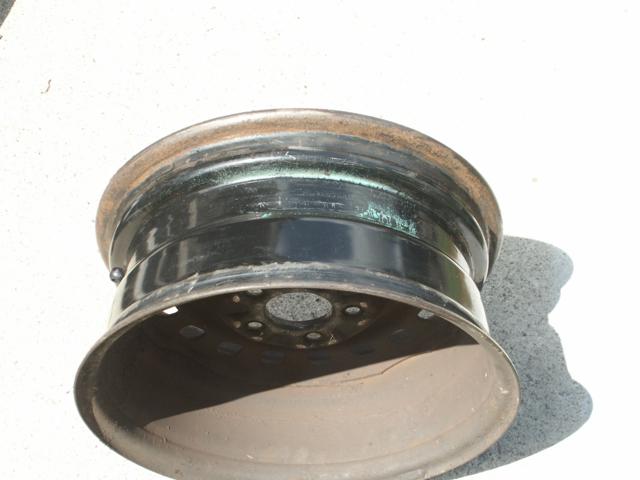
Here's the rim with half of the tire sitting next to it
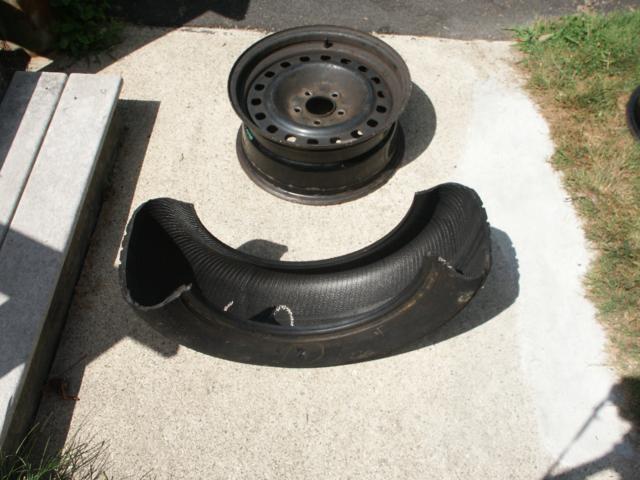
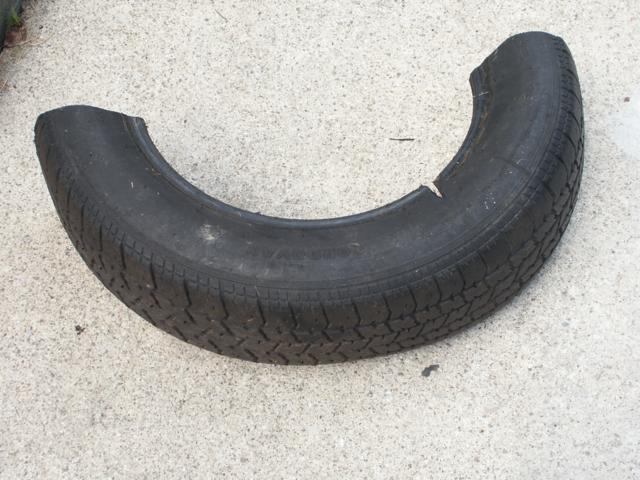
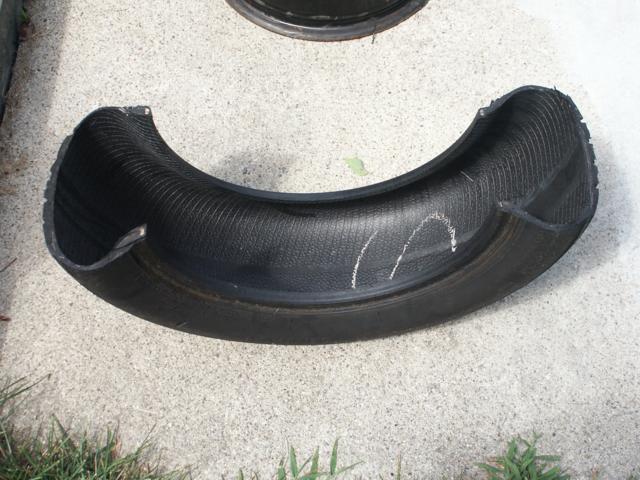
And the rim with the tire cross-section installed on it
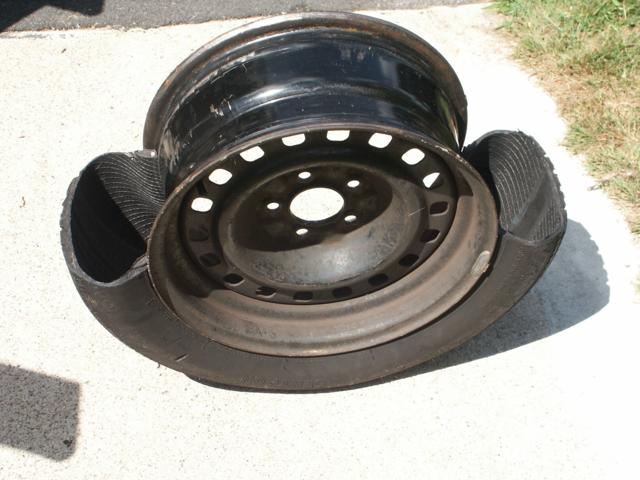
Here's a diagram of how a steel belted radial tire is constructed
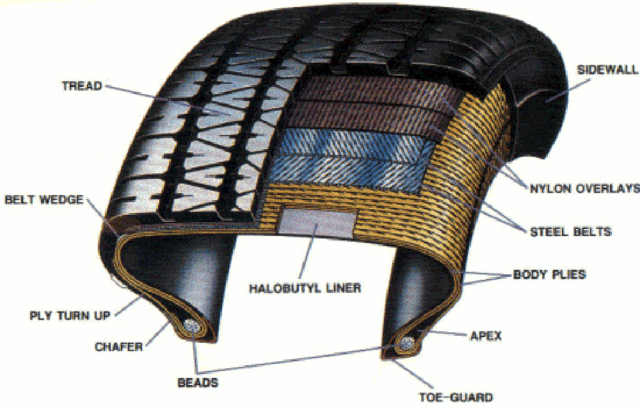
Here's an actual cooper tire cut in half showing how the tire seats
against the rim flange
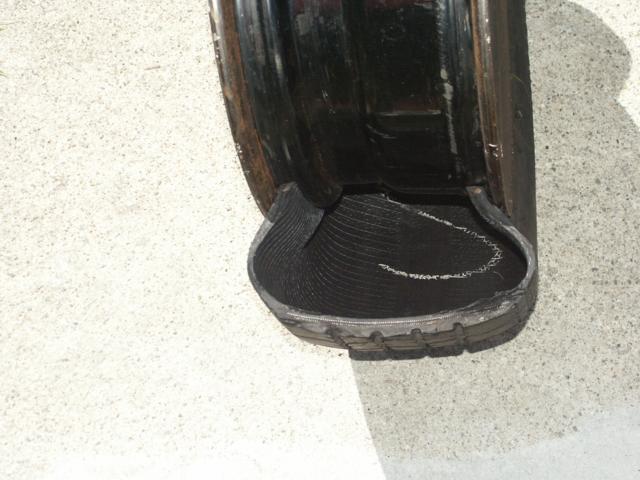
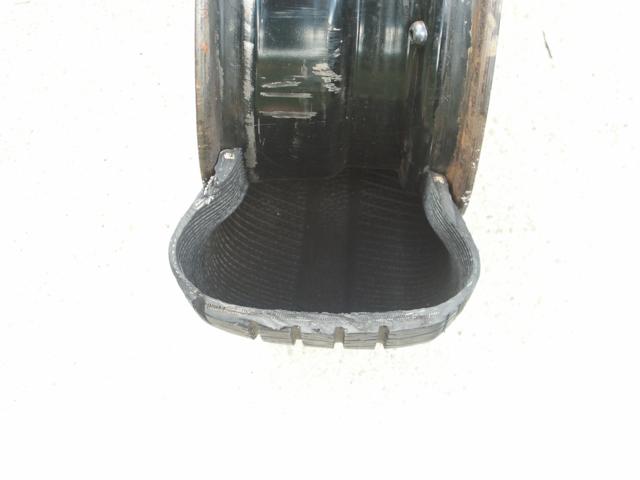
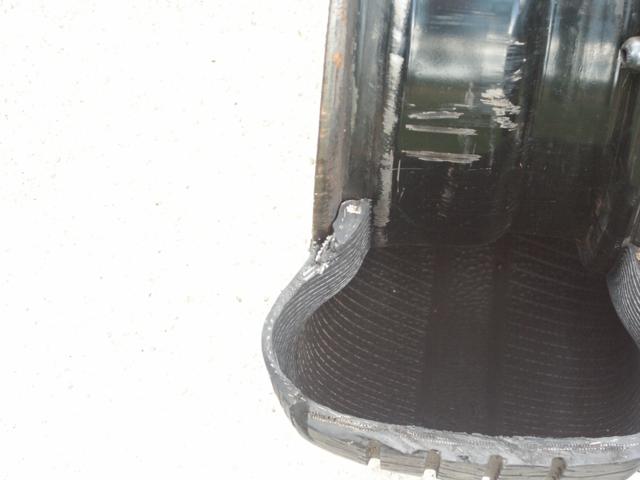
When the rim flange rusts like this, air can escape through the rust
pits.
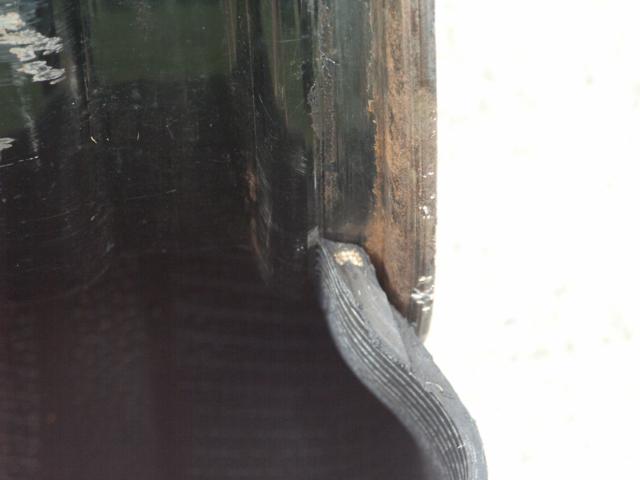
Closeup pictures of the rust around the rim flange
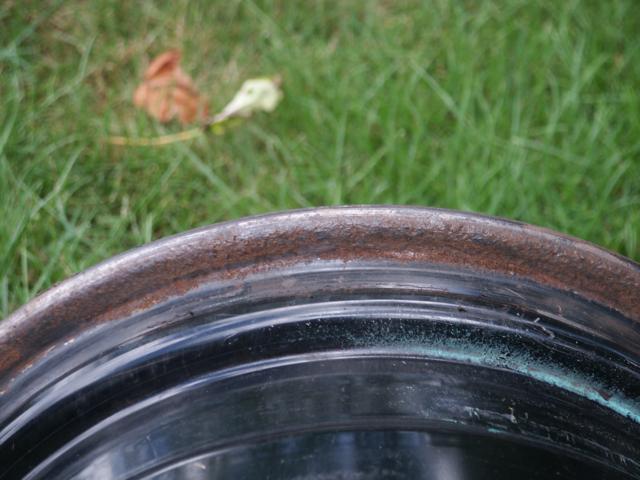
Crevice corrosion happens in this area because water gets trapped in
between the tire and rim with no place to drain out.
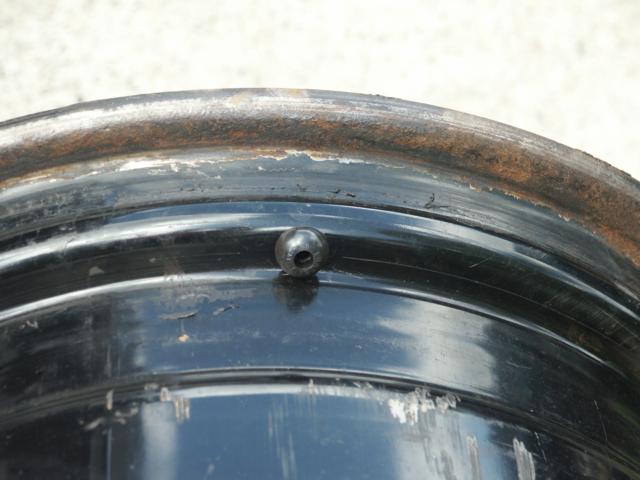
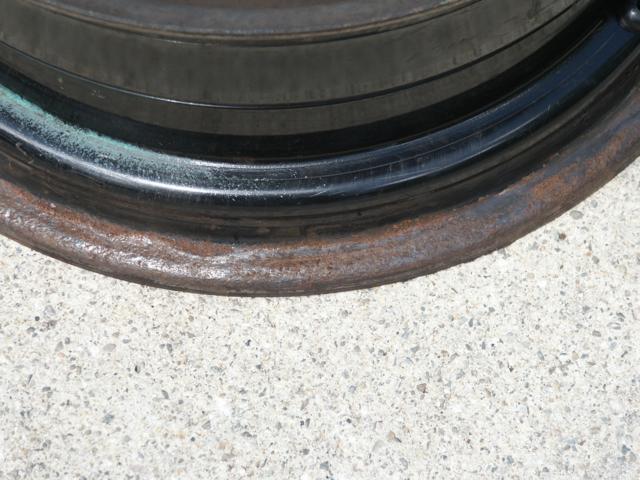

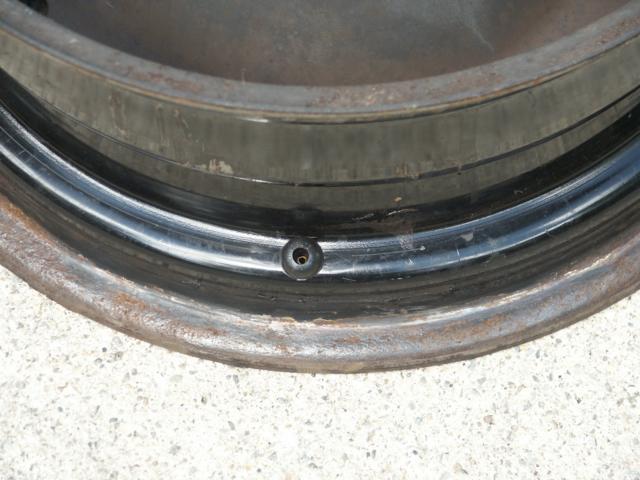
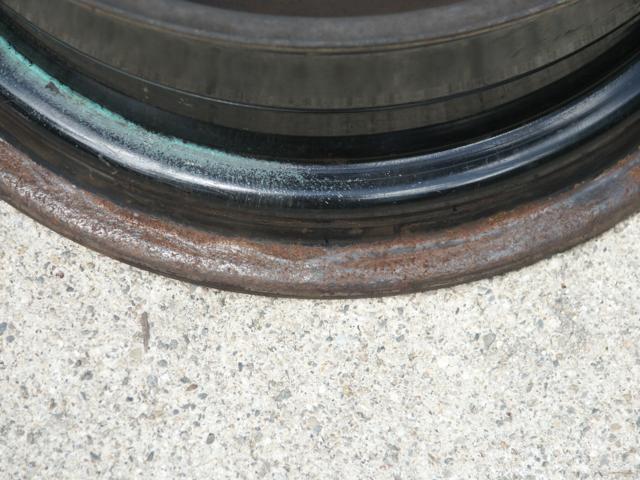
Now that we've seen the rusty rim flange, lets try an experiment to
remove all the corrosion.
First, use an electric drill with a wire wheel to remove the loose rust
scale.
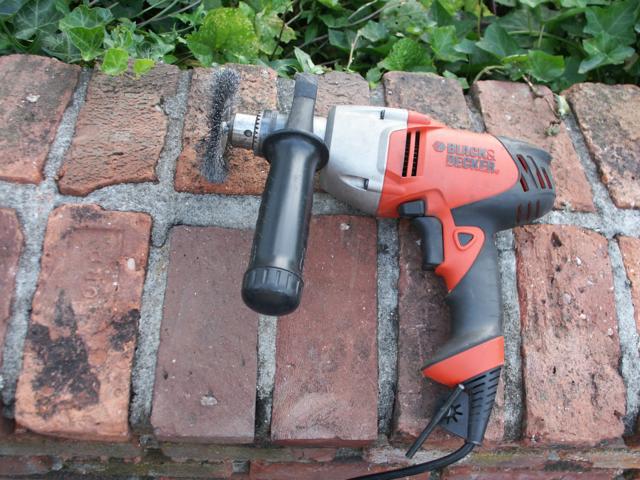
And start dissolving the rust with a phosphoric acid solution
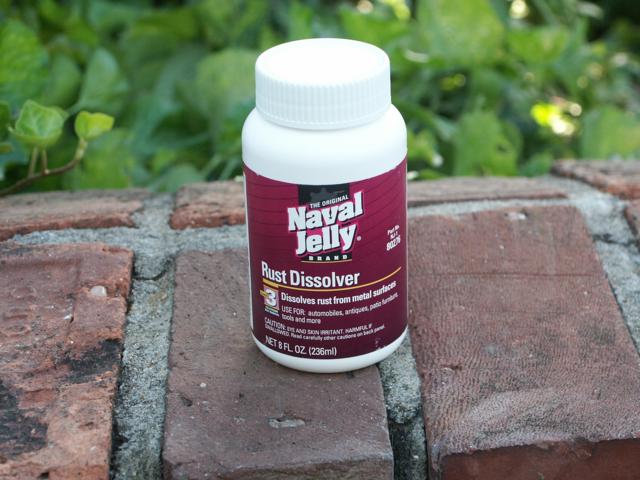
The pink colored stuff on the rim is the naval jelly solution of
phosphoric acid. The small bubbles in the gel tell you that the acid is
doing it's job etching away the rust.
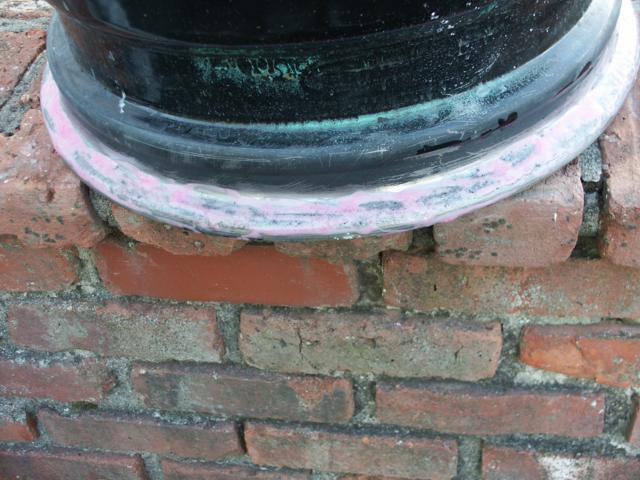
Here's the rim flange after several applications of naval jelly. The
rust is gone for the most part, but there are deep pits in the metal
where the rust pores used to be. Rust never sleeps and you want to get
rid of it all to make sure it doesn't come back.
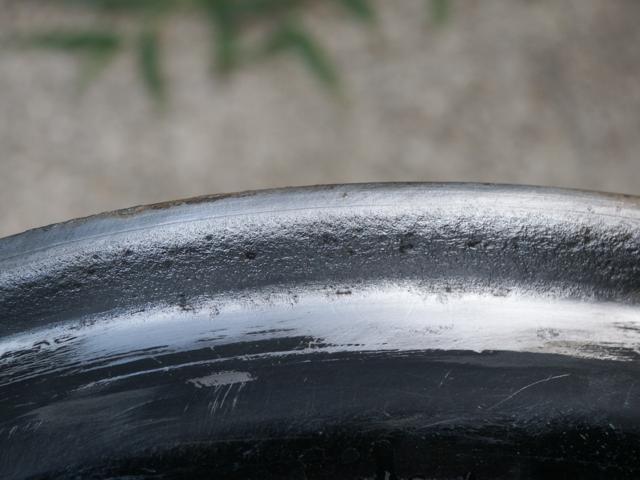
The active ingredient in naval jelly is phosphoric acid. Unlike other
acids that eat away rust, this stuff for the most part leaves the
uncorroded metal behind untouched.
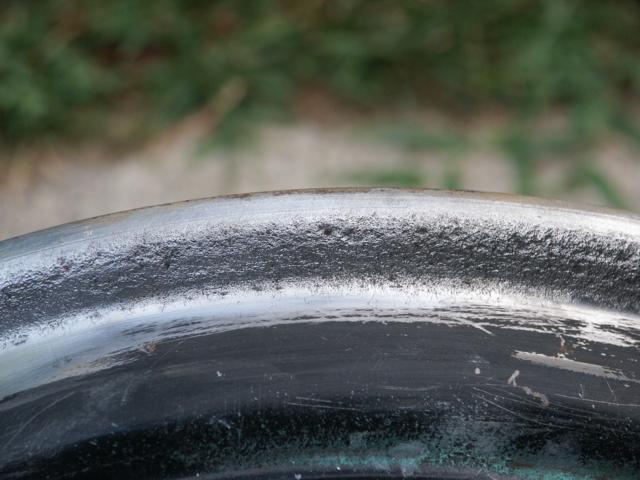
For cleaning up rust, sandblasting also works nicely. It is a lot
faster than etching rust with acid. But it does remove more "good
metal" than the naval jelly method.
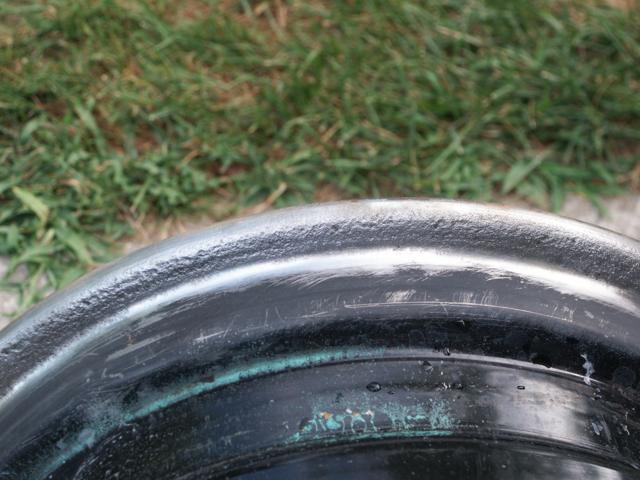
The big problem now is going to be figuring out what substance to use
to fill in craters where the rust used to be. A coat of paint with
some tire bead sealant on top might work.
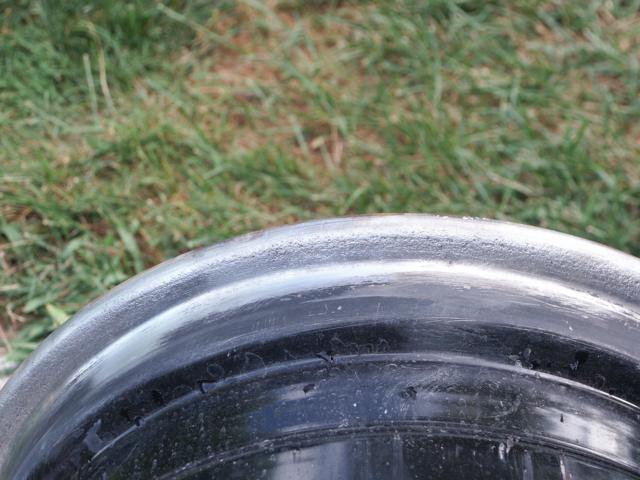
On rare classic cars with rim flange rust this bad, you'll sometimes
see restoration shops weld metal back to the rim flange and then turn
the rim on a lathe. But this rim is from a high volume production car
and replacement rims are plentiful at the junkyards. New replacement
steel wheels are also still avaliable for the 1998-2002 crownvics from
ford motor company too.
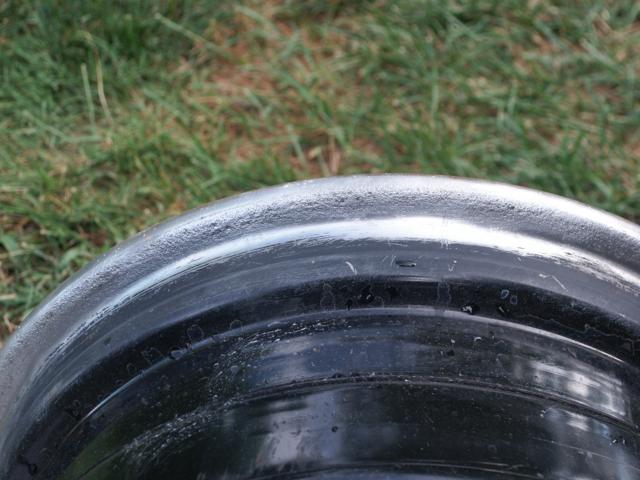
There was quite a bit of rust around the rim flange, but the steel is
still reasonably thick in this area. So the wheel still has a good
amount of mechanical strength left to it in the rim flange area.
Sometimes, you'll encounter rims that are so severly corroded that the
flange area has the strength of tin foil.
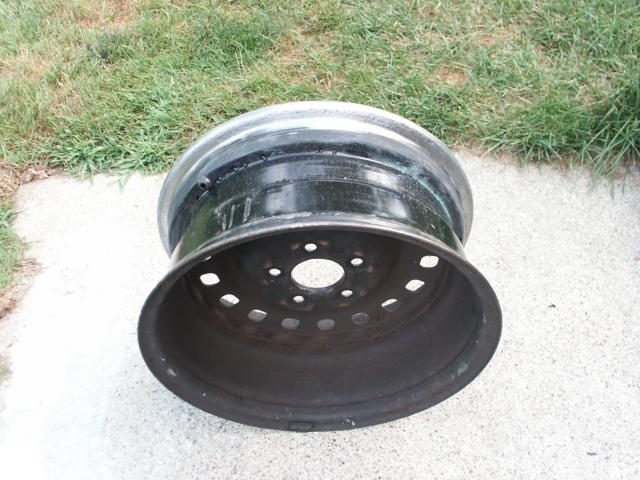
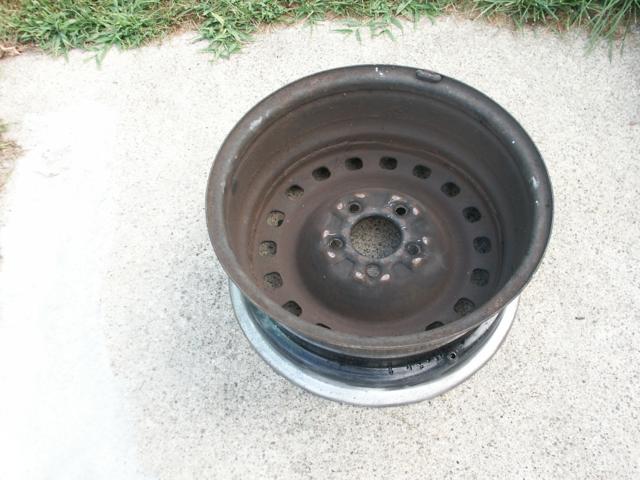
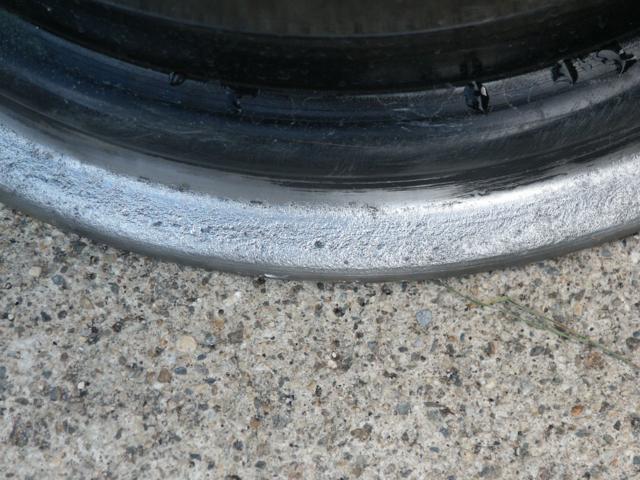
Getting all the rust off this rim took a few days, the process I used
was:
-Apply naval jelly to rusty metal
-Let rim sit overnight with acid solution on rusty metal
-In the morning after the naval jelly had dried, use a wire wheel on an
electric drill to remove the rust that the naval jelly had loosened up
-Then reapply the naval jelly to start the process all over again
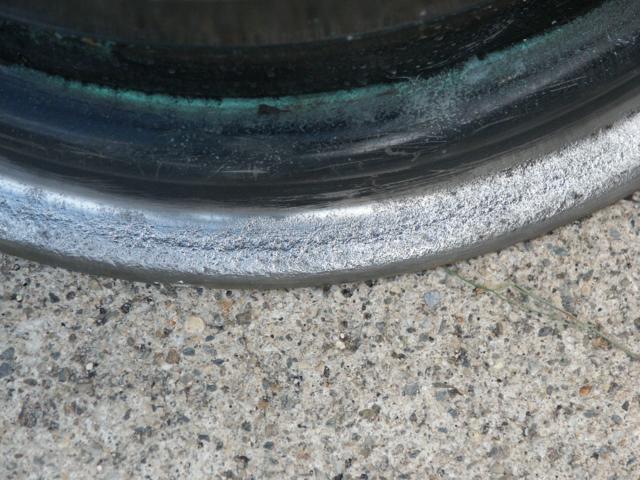
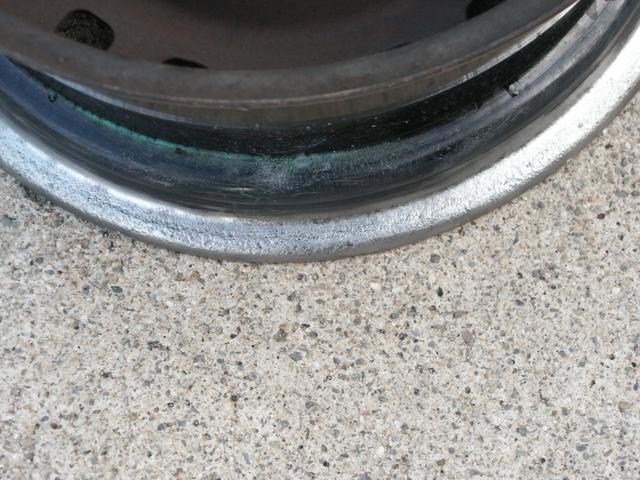
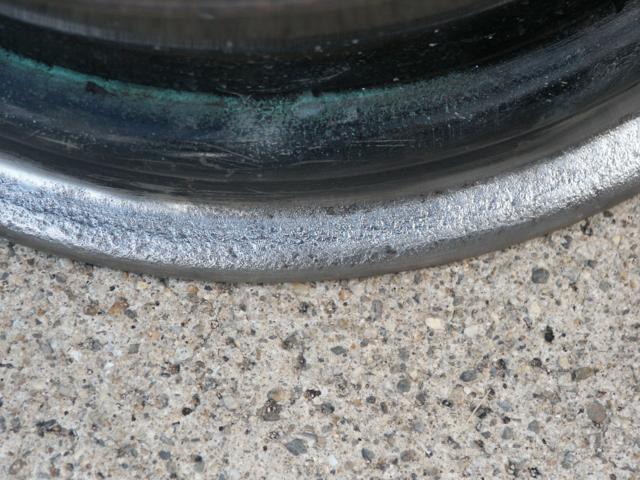
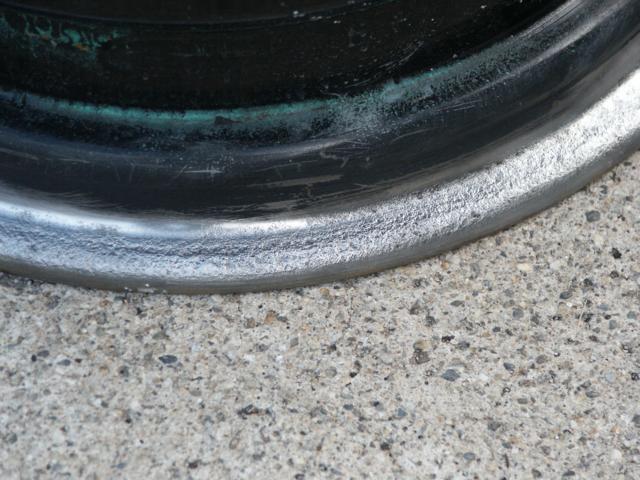
Here's the back of naval jelly bottle
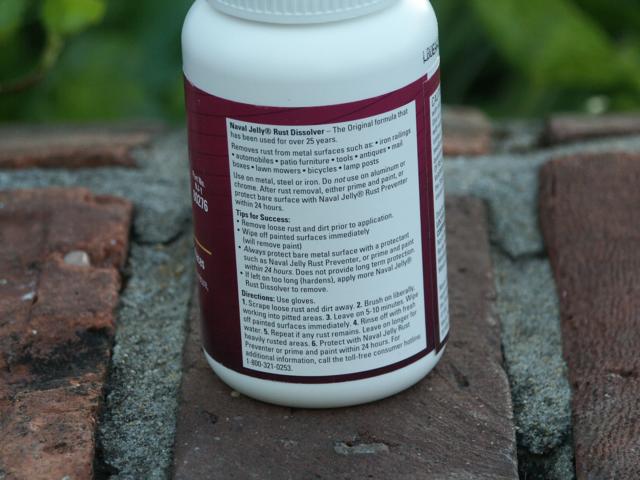

Despite what naval jelly's material
safety data sheet (MSDS) may imply, the substance is relatively
safe to handle. But it would still be a good idea to use the substance
outdoors or in a well ventilated area to prevent the buildup of
irritating fumes.
Wheel Balance Weights
Here is a wheel balance weight on the rim
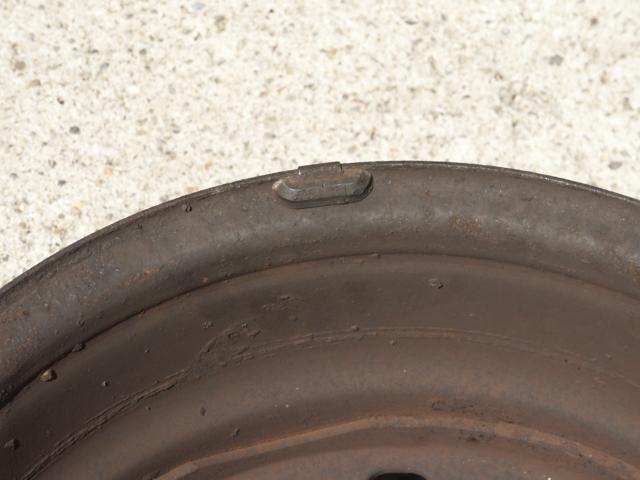
The clips on these do not get deep enough into the flange area to cause
any leaks
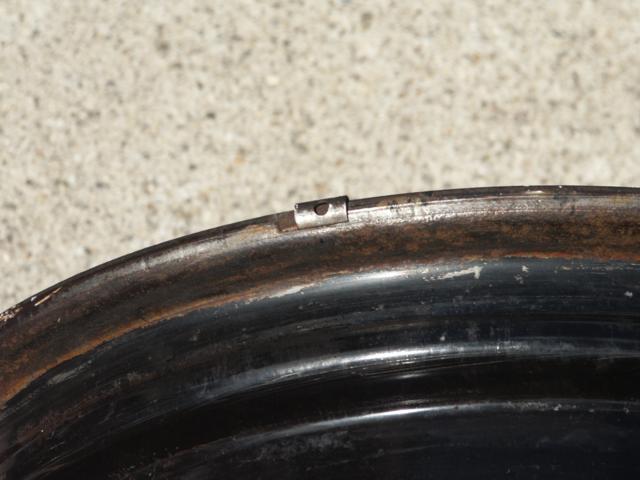
Valve Stem
Sometimes, you'll encounter leaks around the tire valve stem.
Here's a 2000 grand marquis wheel with the valve stem installed
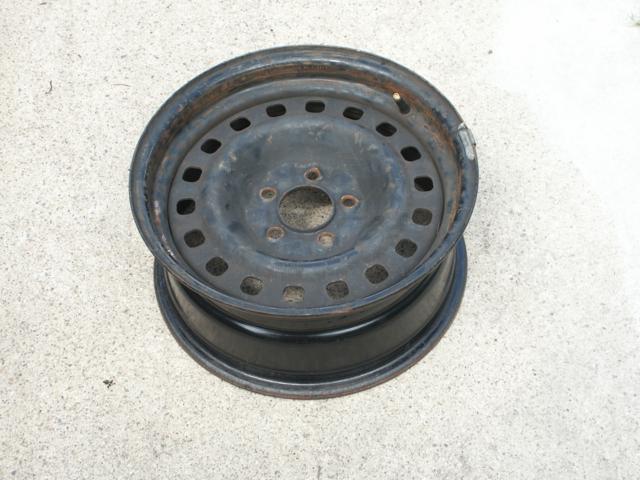
A closeup of the rim from back showing the rear of the valve stem
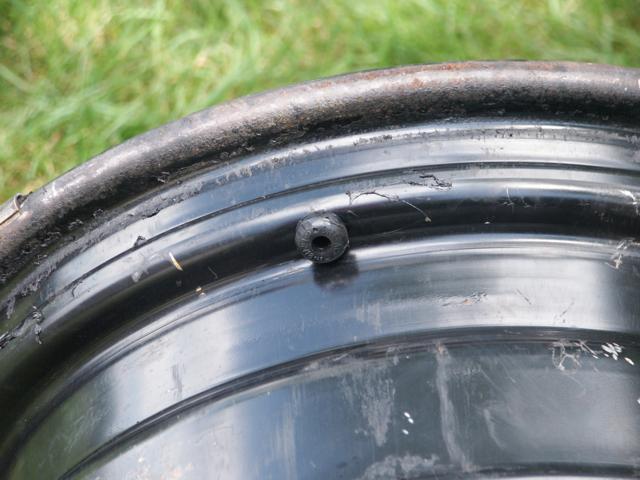
The rim with the valve stem removed. Notice the new circular hole that
didn't used to be there?
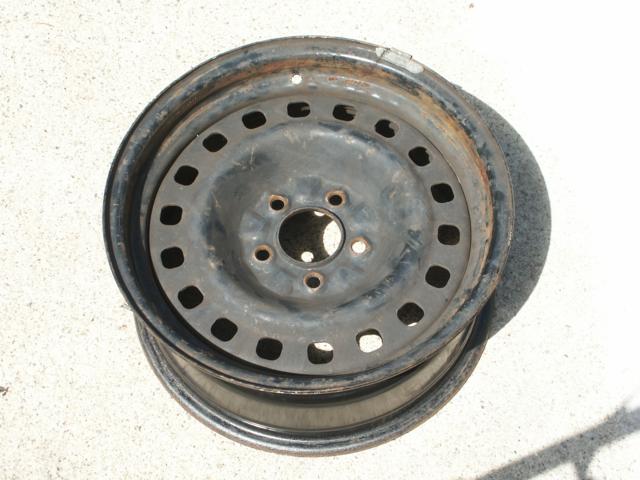
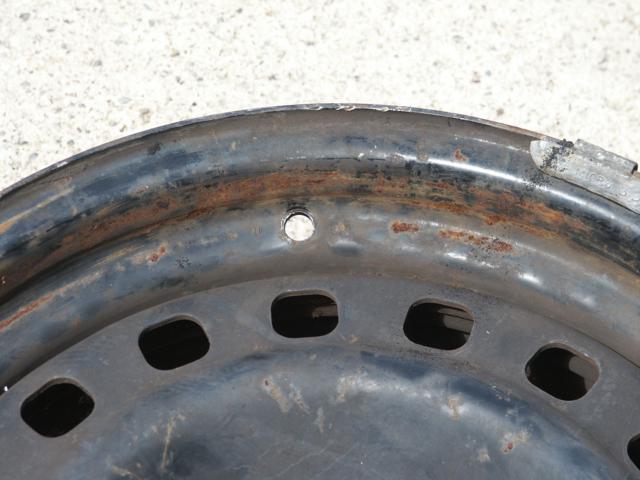
Here's the rim from the back showing where the valve stem would
normally insert
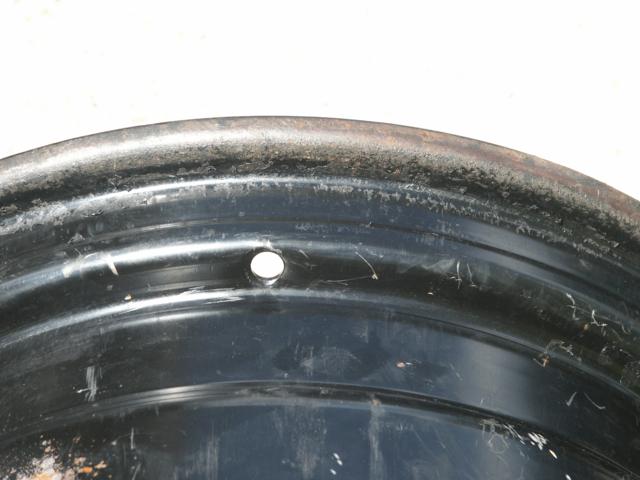
There are some abrasion marks on the valve stem from where the hubcap
was rubbing against it. The hubcap weighs a lot less than a steel
wheel, so the two items don't always want to rotate at the same speed.
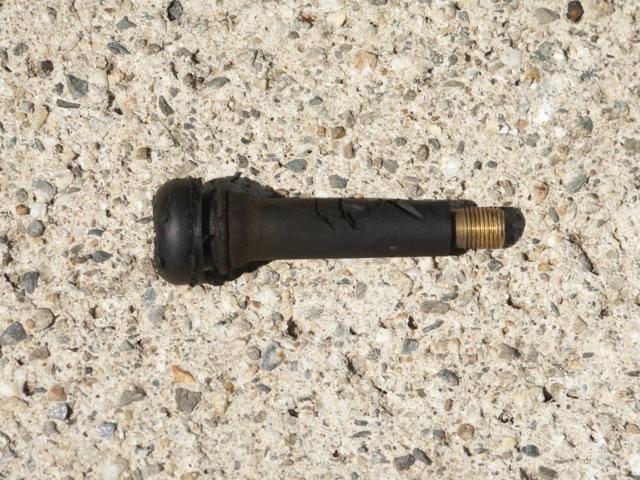
Tire Shop Air Leak Sealing Methods
Bead Sealer
Bead sealer is a black rubbery glue substance that is used to help the
rubber tire seal to the metal rim. It
will also fill in minor imperfections in the rim. And will help keep
small debris like stones from getting in between the tire bead and the
rim flange. It does however make the tire a little more difficult to
get off the rim during service.

Air drill
An air drill with a variety of attachments are used to clean up the
tire bead and the rim flange area
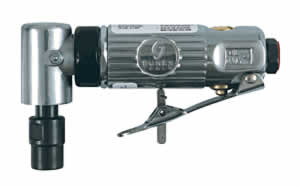
Wire Wheel
On steel wheels, a wire wheel is usually used to clean up corrosion.

Scotch Brite Pads
On aluminum wheels, scotch brite pads are usually used to clean up
corrosion. Aluminum is softer than steel and scratches relatively easy.
These scotchbrite discs are also sometimes used to clean up the rubber
surface of the tire bead too.
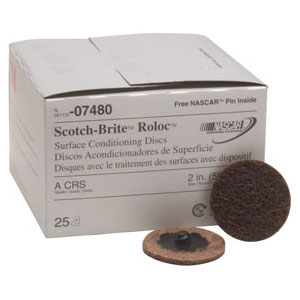
Wire Brush
Without power tools, you could use a wirebrush on the steel wheels
instead. Rust cleanup will take a little longer with this tool.

Bead sealer + Rusty Rim
A common practice to seal up tire air leaks on steel wheels around the
bead area is to remove the loose rust scale with a wire wheel. Then
coat the polished rust with bead sealer and install the tire. This
method did get the really rusted rim pictured above to hold air
reliably for over a year. Unfortunetly, rust never sleeps and that
wheel developed air leaks again requiring the tire to be removed from
the rim to "clean up" the bead area yet again. There's no perfect
solution besides replacing a rim with a new one once the flange is
rusted this badly.
Do It Yourself Tire Leak Repairs
You'll sometimes see the do-it-yourself crowd install large quantities
of tire sealer via the valve stem in an attempt to stop bead leaks.
This stuff has a poor success rate at repairing air leaks around the
tire bead. It does however make a real mess in between the tire and
rim. And it will also throw off your wheel balance.
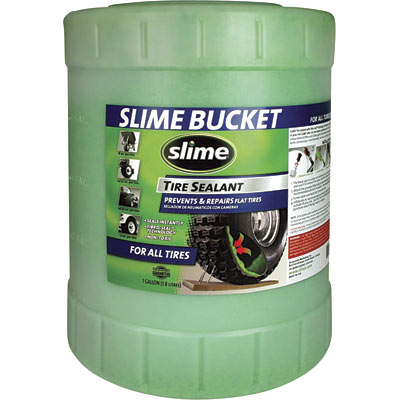
Other Notes:
- A common practice to pinpoint leaks is to submerge a wheel into a
large container of water. If you see any bubbles coming out of the
water, then you've got an air leak in that area.
- Another common practice to pinpoint leaks is to apply a mixture
of soap and water onto the tire. When you see lots of bubbles coming
out of an area, you've got an air leak there.
- Ford crown victorias recieved a tire pressure monitoring system
(tpms) starting in the 2008 model year. In 2007 model year and earlier
crownvics, you can ride around all day with low air pressure in your
tires without any warning lights illuminating on your dashboard
instrument cluster.
- The rim pictured above is really damaged around the bead flange
area
from corrosion. For a reliable air seal, the wheel should be replaced
with a new one.
- This webpage was compiled to give car owners background
information
about what a "tire bead leak" means. Tire shop technicians that
frequently work on older vehicles in the northeastern united states
will have lots of practice sanding down rusty rims and applying bead
sealer.
- For removing a tire from the rim, the general car owning public
is
going to be at the mercy of their local tire service shop. The
equipment to pull a tire off the rim, install a tire onto the rim, and
then rebalance the wheel costs thousands of dollars to purchase. But
when you've got a mysterious tire air leak, it's still useful to have
background information about how a tire seals onto the rim so that you
can have a more productive discussion with the technicans at your local
tire shop.
- I started a discussion thread on the hotrodders.com message forum
to solicit comments about this corroded wheel. This is an "old school"
steel wheel that's constructed much like the ones on yesteryear
hotrods. Here's
a link to the discussion thread.





















































